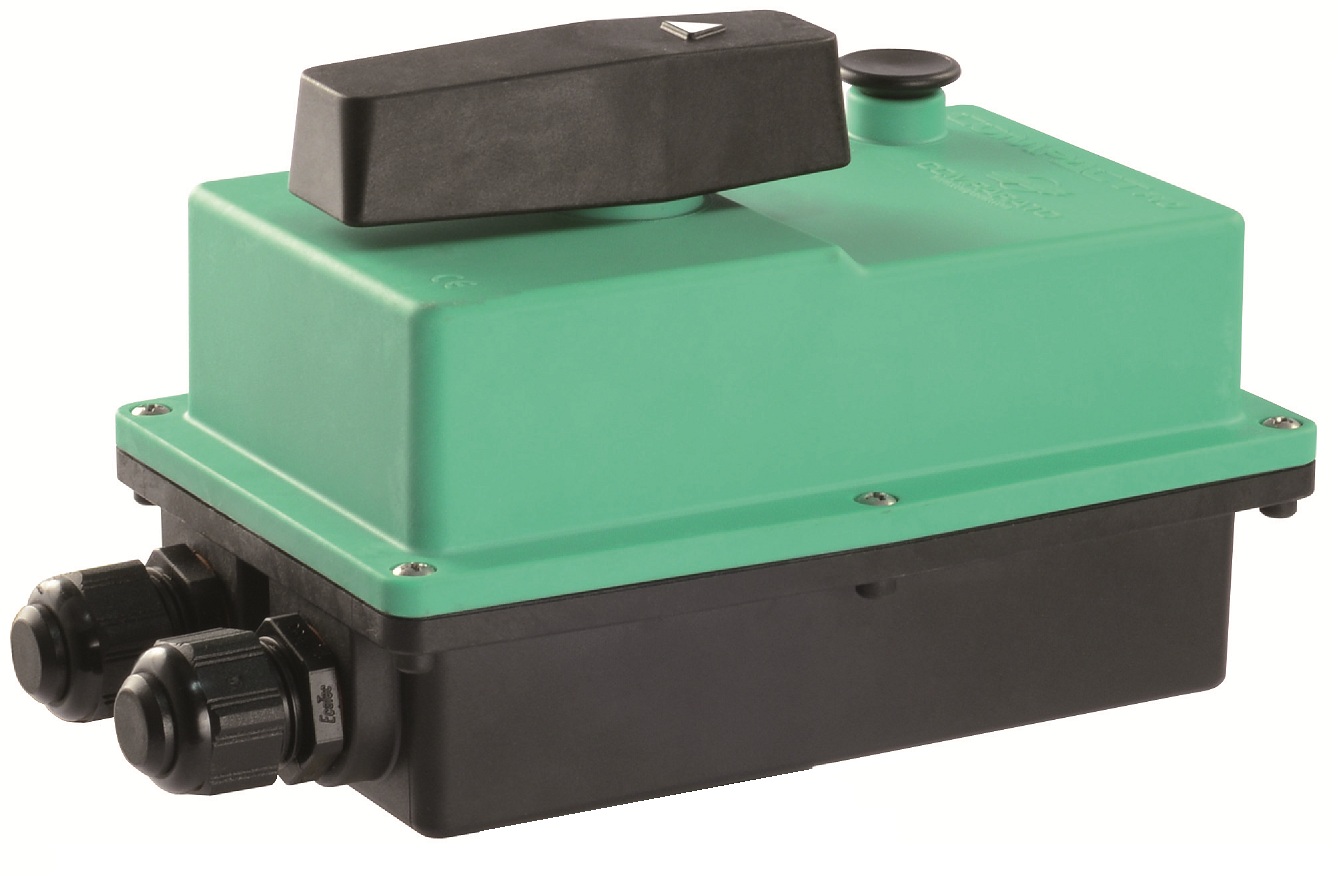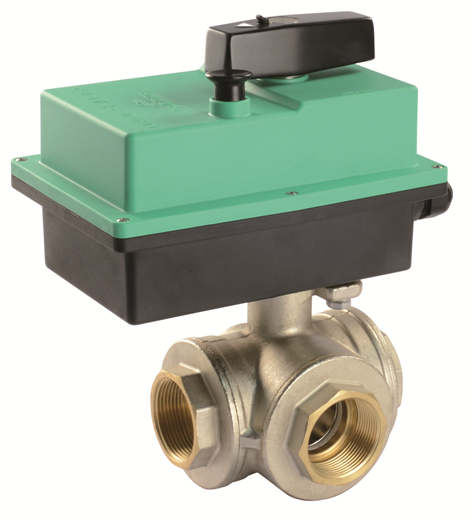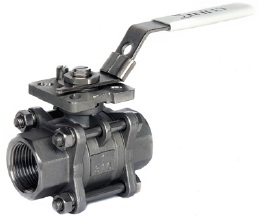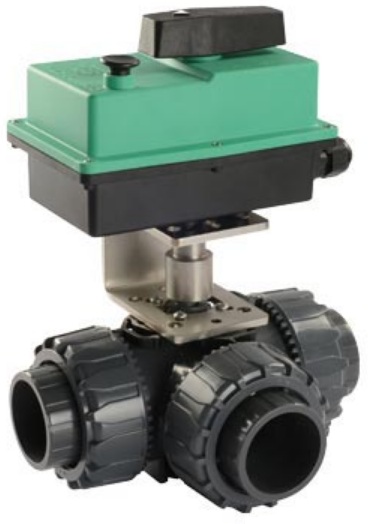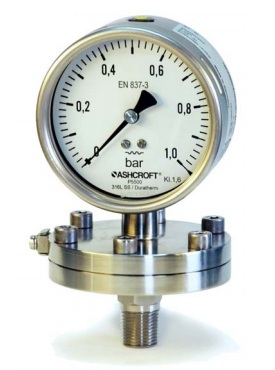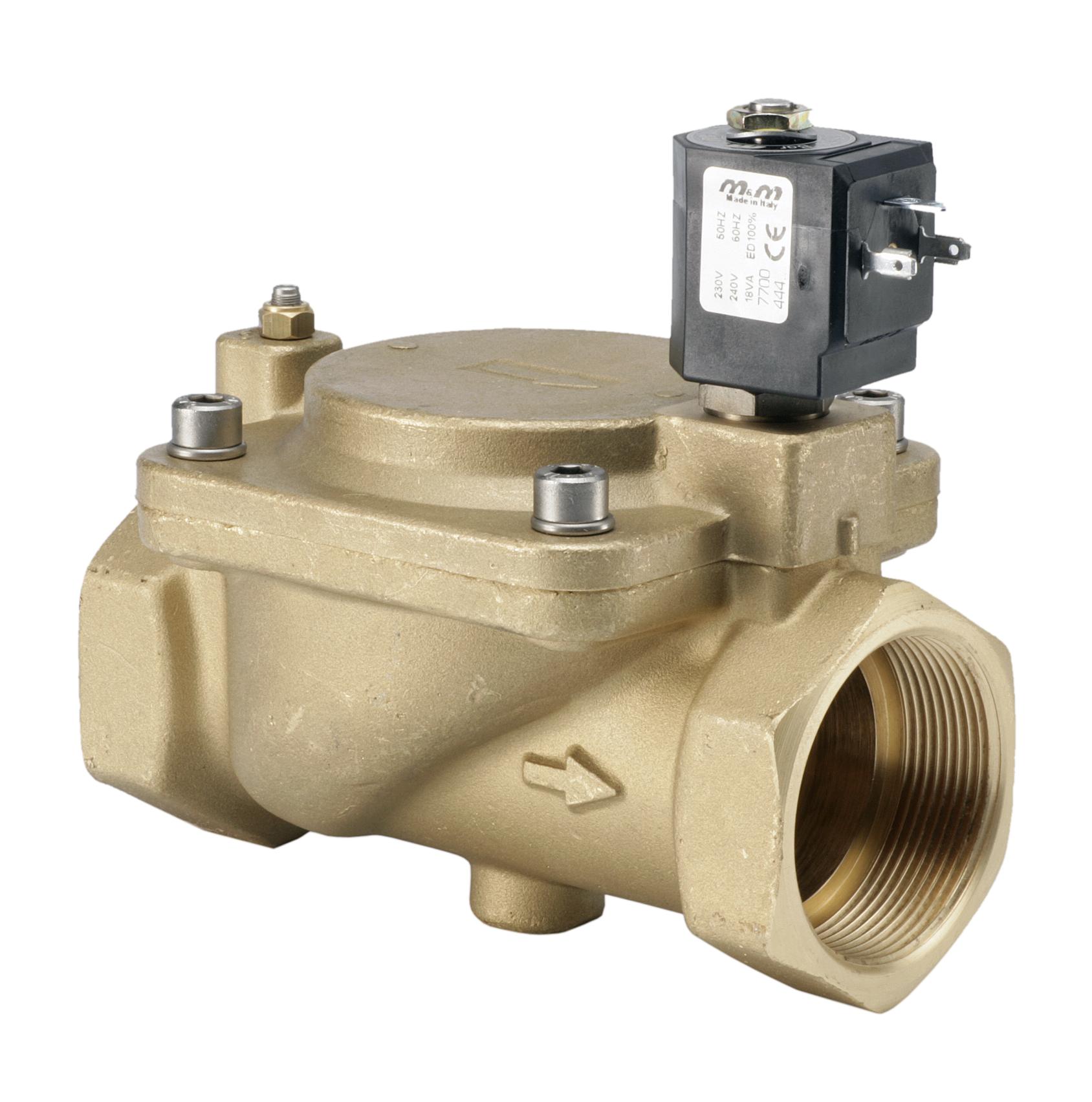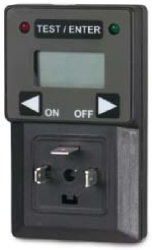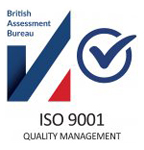Solenoid Valves In Water Applications
Solenoid valves have a wide variety of uses in water applications.
The applications that some of our solenoid valves have been used in are as follows:
Solenoid valves in car washing systems
Self-service car washing systems are an innovation in the car washing field. They are self-service washing areas for cleaning vehicles like scooters, motorcycles, camper vans, caravans, small boats and all-terrain vehicles that cannot be cleaned in traditional car washing systems with brushes. The system delivers high-pressure water mixed with wax, detergent and car washing foam through a lance and a brush.
The user selects a cleaning cycle on the control panel and cleans the vehicle using two basic tools: a lance and a brush. While the vehicle is being rubbed, the brush pours liquid detergent to remove dirt. During the shampooing cycle, two solenoid valves let cold and hot water into the circuit. Three more solenoid valves inside the circuit intercept liquid detergent, foam and wax respectively and mix them with water.
An electromechanical pump sucks up the mixture by depression and lets it back into the circuit at 80 bar. Before reaching the brush, the liquid is further mixed with air. The lance is a washing gun shooting either water or shampoo under pressure, according to the selected cleaning cycle. Usually, water used for rinsing is softened and osmotic, a treatment that prevents white limescale from staining the vehicle.
The solenoid valve used in this application is:
The body of the recommended valve is nickel coated to protect the brass against corrosion when detergents flow through it.
Solenoid valves used in dryers
In their typical application, air dryers are used to remove the condensate in compressed air installations. Compressed air produced by compressors contains a large quantity of steam that can condensate and provoke serious damage in the equipment utilizing it. In the most common applications about 70% of water is eliminated by the final cooler, whereas for the remaining 30% only an air dryer is effective. The diagram below shows a typical installation of an air dryer in an industrial system for air treatment: (1) Air Compressor; (2) Cooler;(3) Separator; (4) Tank; (5) By-pass Valve; (6) Dryer.
Inside an air-to-air exchanger, compressed air going into the system is precooled by dried compressed air coming from an evaporator; then it enters the evaporator where it is cooled down to Dew Point by the evaporating frigorific medium (freon). The condensate produced during the cooling process is set apart and drained; before leaving the system, compressed air is heated in the air-to-air exchanger mentioned above.
The refrigerating circuit produces cold needed to cool compressed air to Dew Point (2°C – 3°C). Cold produced by the refrigerating system adjusts to the temperature and flow rate changes of compressed air thanks to a by-pass valve with “hot gas”. The valve prevents the temperature in the evaporator from going down and consequently the condensate from freezing. The level of condensate in the tank is controlled by a level sensor connected to the control panel.
The control panel operates a solenoid valve so that only the condensate produced is drained and expensive losses of compressed air avoided. A warning light notifies problems in the exhaust system.
The solenoid valve used in this application is:
The recommended valve combines small dimensions and performances suitable for use with compressed air (0-15 Bar). Since this is a direct acting valve with a rather small orifice (2.2 mm) it should be fitted with a filter to prevent condensate from clogging the valve. Important: The use of a timer operated solenoid valve competes with a more refined and much more expensive system based on a zero loss timed electronic drain with no waste of compressed air.
Solenoid valves in electronic mixers
Equipment for supplying water without hand contact. By moving the hands in the infrared area of taps or approaching shower and urinal systems, water will flow. The use of electronic mixers is compulsory in places requiring special precautions, such as hospitals and public places. Furthermore, this application will get a reduction of consumption due to the fact that the water supply stops automatically a few seconds after use.
The system is based on an optical sensor (photocell) producing an infrared beam of light. When the beam is interrupted by the presence of a body the sensor sends an electric impulse to the control unit, which electrically operates the two solenoid valves. The valves are connected to the hydraulic system and deliver hot and cold water. Thanks to a mixer, the water temperature is properly regulated.
The solenoid valve used in this application is:
A remarkable flow rate is needed for this application. Therefore the choice of a pilot operated solenoid valve in place of a direct acting valve is justified by a very large nominal diameter (13 mm). In addition, the recommended valve undergoes a Niploy coating process to withstand outdoor deterioration caused by the atmosphere in places like urinals.
Solenoid valves in floor washing machines
Household appliance for automatically cleaning floors, suitable for industrial use. The cleaning system consists of a rotating brush rubbing the floor. The appliance is equipped with a tank containing water and detergent, which are released on the brush when the operator presses a button.
The solenoid valve allows water and detergent to flow from the tank to the rotating brush. The valve max working pressure is close to zero because fluids contained in the tank are at atmospheric pressure. The solenoid valve is electrically operated by a button on the machine console.
The solenoid valves used in this application are:
Water is not under pressure, therefore, a 2/2 way direct acting vending valve is suitable for this application. The valves proposed above have a simple construction and a very large nominal diameter, (11mm) for the brass construction and (13 mm) for the plastic construction. Since the valve can be exposed to strokes while being used, a brass body is to be preferred. The brass body is the female GAS connection, whereas the polysulphone body has a hose tail connection (inlet 17.5 mm fitted with 3/8”, outlet 16.5 mm).
While developing the project it is important to make sure that the valve is not exposed to stresses. Some customers like the 45° inclination of the outlet of the plastic body, which eliminates an angle. In addition, the plastic version has an exhaust hose tail used in applications with beverages, which needs to be capped in this application.
Solenoid valves in foam markers
Foam markers are used to bound the ground to be processed by farm machines. They are fitted to weeding machines, manure spreaders and seed sowing machines to prevent some areas from overlapping or not being treated. The system mixes a foaming agent with air, thus generating bubbles of white foam that fall to the ground at regular intervals marking areas that have already been processed.
The compressor sends compressed air to the tank containing the foaming agent, which passes to the dispenser under the effect of pressure. A battery of solenoid valves (two for the foaming agent and two for air) located on the dispenser is operated by an electrical control and allows medium and air under pressure to pass through their pipes. Foam bubbles are generated at the end of the process when air mixed with the foaming agent is ejected through the nozzles.
the types of solenoid valves used in this application are:
The three valves proposed are all suitable for this application. The best compromise, however, is type 248 because:
– of its smaller overall dimensions and greater solidity as compared to type B297
– the power of series 8 coils is between series 2 and series 7
Solenoid valves in hydro saunas
Hydro saunas are a space designed for body treatment. It combines all the functions of the bath and shower areas in a single structure: hydromassage, hydroshower, lymph drainage, plantar massage and steam sauna can all be set by a control panel. The panel is installed inside the cabin and allows the user to choose among various combinations of functions, adjusting also temperature and duration. Besides being equipped with accessories like radio, telephone and clock, multifunction showers possess safety and hygiene systems like automatic disinfection and drain system.
The solenoid valve connected to the exhaust carries out the automatic function of the drain system: at the end of each program, the control panel operates the solenoid valve, which lets out the water inside the bath. The outflow is followed by an automatic cleaning that removes any stagnation or deposits of water in the system, thus preventing limestone from forming.
The type of solenoid valve used in this application is:
The solenoid valve recommended for this application is a vending valve because the exhaust is not under pressure.
Solenoid valves used in a kit for sowing machines
Equipment used for weed killing. It is fitted to sowing machines led by farm tractors and distributes liquids on the ground during the sowing process.
The liquid from the tank is certrifugated by the electro-pump and sprayed on the ground by a blade spreader positioned at the back of the machine, with a 120° inclination. The solenoid valves and electro-pump are operated by an electronic control in three different stages. In the first stage, the electro-pump is operated. The solenoid valves letting the liquid into the spinning electro-pump (starting working stage) are then operated. The third stage anticipates the closing of the first solenoid valve and allows the electro-pump to drain the liquid remaining at the end of the process.
The solenoid valve used in this application is:
This application requires a steady delivery of liquid under pressure (5 bar). If a pilot operated solenoid valve was used in this application, the weedkilling liquids would clog the diaphragm orifice. Therefore a 2-way direct acting solenoid valve is recommended. The type suggested above has a 4 mm main orifice (the largest orifice that can be used to satisfy the requested performances). The Viton seal is suitable for controlling weedkilling liquids (pesticides, herbicides, fungicides, insecticides). The supply of the farm tractor cab makes it necessary to use the valve with a 12V DC coil.
Solenoid valves used in media perparators
Automatic equipment for preparing Agar, a sterile nutritive soil used to grow bacteria. Agar is used in microbiological analyses of drugs, cosmetics and food. Food contamination by pathogenic micro-organisms is one of the major problems faced by the food industry. Biochemical analyses detect contaminations in a short time. Samples of products to be analysed are filtered and distributed on Petri plates containing nutritive soil favouring the reproduction of bacteria. When the reproduction does not take place at the scheduled times, the product can be marketed.
The media preparator carries out various operations: mixing, warming, sterilizing, cooling, which are all carried out in a single container, where thermolabile substances are also added. Two solenoid valves are used in the sterilization circuit, operated by a head control panel. With the first solenoid valve, cold water is taken from the water system and let into the system. When Agar has been dosed on the plates for growing bacteria, water that has warmed up during treatment is exhausted through the second solenoid valve.
The type of solenoid valve used in this application is:
The type of solenoid valve recommended for this application is quite robust and has a 5.5 mm main orifice. This large orifice ensures an extremely high flow rate with a performance of 3,5 bar, more than enough to manage the pressure of water from the water system, usually delivered between 2 and 3 bar.
Solenoid valves used in thermoconvector ovens – steam
A professional mixed oven is a triple oven combining forced convection and steam cooking. Steam is generated instantly in the pre-cooking chamber; uniformity of cooking is favoured by the forced ventilation and the slight overpressure obtained in the airtight chamber. In the combined mode the quality of cooking is improved by the automatic control of the quantity of steam let into the chamber. The control panel guarantees precise working temperatures and allows to check the temperature of the product by a core drill
The steam circuit includes a steam generator overheating water taken from the supply system. Water is then let into the cooking chamber in the form of steam. The function of the solenoid valve is to exhaust the tank collecting the condensation. When the oven is on, the solenoid valve is energized by the electronic panel and closes the exhaust hermetically. At the end of the cooking cycle the oven is turned off and the solenoid valve de-energized. It opens the exhaust from the tank so that condensate accumulated during cooking is drained off.
The types of solenoid valves used in this application are:
For this application, we recommend a normally open direct acting solenoid valve because it operates only when the oven is on. Since the solenoid valve remains energized most of the day, a robust model and a class H coil are required. The latter is designed to better resist heat generated by the electric power. The flow rate is unimportant because the maximum capacity of the collecting tank is 1 litre and the pressure is close to zero.
Solenoid valves in thermoelectric heaters
Thermoelectric heaters combine the principles of fireplaces, boilers and heaters. As a matter of fact, they are a heating source for the whole house through the radiators placed in the various rooms and produce hot water for sanitary fixtures like modern boilers. In addition, they can barbecue, bake, grill and roast at the same time.
The system exploits heat generated by the combustion of wood or gas to warm water and distribute it to the various household fixtures. Two solenoid valves are connected to the hydraulic system of sanitary water. With the former cold water is taken from the water supply and let into the circuit of the thermoelectric heater. Water flowing close to the smoke exhaust warms up and is controlled by the second solenoid valve to be distributed to the sanitary fixtures (bathrooms, kitchen) in the house.
The type of solenoid valve used in this application is:
A remarkable flow rate is needed for this application. Therefore the choice of a pilot operated solenoid valve rather than a direct acting solenoid valve is justified by the large passage. Due to this the recommended valve is a standard type for use with water with an NBR seal.
Solenoid valves used in water meters
Water meters are electro-mechanical appliances allowing the supply of a predefined quantity of water to an equipment placed below. Applications are various; the most important is in the food industry. In ovens for baking bread or pasta, water meters are used to supply the exact quantity of water when the dough is kneaded. Water meters are equipped with analogue or digital readers.
The water meter measures the quantity of a liquid flowing through it. A predefined rating is set and when this rating is reached, the water meter sends an electric signal to the solenoid valve placed below, which closes, thus stopping the supply of the water.
The type of solenoid valve used in this application is:
Solenoid valves for this application are usually pilot operated, in order to provide a larger flow rate when the water is supplied from a tank.. Due to this, the pressure is very low and therefore it is necessary to make use of pilot operated solenoid valves with assisted lift, which work with the minimum working pressure equal to zero.
You can view the V-Flow Solutions range of M&M solenoid valves here:





